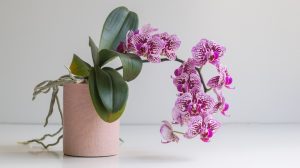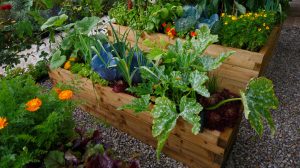If you frequently find yourself in need of a low-growing perennial that can hold its own in a sunny spot in the garden, lady’s mantle (Alchemilla), a member of the rose family, may just be the plant for you.
Native to alpine meadows and woodlands, lady’s mantle grows in dense clumps with attractive pleated and lobed leaves. In the summer, it sends up wiry stems topped by clusters of chartreuse flowers that look like tiny bells. These flowers are a popular source of nectar for bees and butterflies, making lady’s mantle a good companion plant for attracting pollinators.
When growing lady’s mantle, it’s important to provide it with the right care. This includes planting it in well-drained soil that is rich in organic matter. Lady’s mantle prefers full sun to partial shade and can tolerate a wide range of temperatures. It is also important to keep the plant watered during dry periods, but be careful not to overwater as this can lead to fungal diseases.
If you’re starting lady’s mantle from seed, begin by sowing the seeds in a shallow hole and cover them lightly with soil. Keep the soil moist until the plants are established, and then water them deeply and infrequently. Lady’s mantle does not require much fertilizer, but a light application of a balanced fertilizer in early spring can help promote healthy growth and abundant flowering.
When it comes to pruning lady’s mantle, shear the plants back to the ground in late winter or early spring before new growth begins. This will help maintain their compact form and prevent them from becoming invasive. Lady’s mantle can also benefit from division every four years to rejuvenate the plants and prevent them from becoming overcrowded.
In summary, lady’s mantle is a stunning and versatile plant that can add beauty and interest to any garden. With proper care and maintenance, it can thrive in a variety of growing conditions and provide a lush backdrop or edging for larger, showy plants. Whether you’re a beginner gardener or an experienced horticulturist, lady’s mantle is a plant that is sure to impress and delight.
Alchemilla mollis
Alchemilla mollis, commonly known as lady’s mantle, is a low-growing perennial that is widely grown in European gardens. It belongs to the family Alchemillaceae and is a commonly asked about plant for its care and maintenance. Lady’s mantle has gray-green lobed leaves that are scalloped at the edges, giving it an airy and delicate appearance.
Lady’s mantle is a versatile plant that can thrive in a variety of conditions. It prefers alkaline soils and tends to do well in shady areas, making it an ideal groundcover for woodland gardens. Lady’s mantle is known for its spreading habit and slowly reaches a height of about four feet. In the summer, lady’s mantle produces delicate yellow-green flowers that are held above the foliage.
When caring for lady’s mantle, it is important to choose a well-drained soil, as the plant does not tolerate wet feet. Lady’s mantle is drought-tolerant once established and does not require frequent watering. However, it can benefit from regular watering during periods of extended drought.
Lady’s mantle can be propagated through division in the spring or by seed. Established plants can be divided every two to three years to maintain their vigor. Lady’s mantle can also self-seed, but this can lead to overcrowding in the garden if not managed.
In terms of fertilization, lady’s mantle does not require much. A light application of organic fertilizer in the spring is sufficient. Be careful not to over-fertilize, as this can lead to excess leaf growth and may cause the plant to lose its airy appearance.
Lady’s mantle is a low-maintenance plant that is generally pest and disease-free. However, it may be susceptible to slug damage, particularly in wet conditions. To prevent this, you can regularly inspect the plant for slugs and take appropriate measures to control them.
In conclusion, Alchemilla mollis, or lady’s mantle, is a popular plant in the European landscape. It is easy to grow and care for, making it a great choice for both beginner and experienced gardeners. Whether used as a groundcover, filler plant, or focal point, lady’s mantle adds a touch of elegance to any garden.
Source: How To Grow Lady’s Mantle And Lady’s Mantle Care
How To Grow Lady’s Mantle And Lady’s Mantle Care
Growing lady’s mantle (Alchemilla mollis) is a great way to add a unique and beautiful perennial to your garden. This low-maintenance plant is known for its attractive gray-green foliage and its delicate clusters of tiny yellow flowers.
To make sure your lady’s mantle thrives, it is important to choose the right location. Lady’s mantle prefers a slightly alkaline soil, but it can tolerate a range of soil types. It also does well in full sun or partial shade, although it may need some protection from intense afternoon sun.
When caring for lady’s mantle, it is essential to provide adequate moisture. Lady’s mantle prefers evenly moist soil, so make sure to water regularly, especially during dry periods. However, be careful not to overwater, as this can lead to fungal problems.
Lady’s mantle is a spreading plant, so it is a good idea to provide enough space for it to grow. It can be used as a groundcover or featured in a woodland garden. Lady’s mantle also makes a great companion plant for other perennials, as its dense foliage can help suppress weeds.
In the summer, lady’s mantle produces tall, scalloped leaves that add an interesting touch to your garden. These leaves also make excellent cut flowers and can be used in floral arrangements. Lady’s mantle is a member of the Rosaceae family, which is widely known for its medicinal plants and beautiful flowers.
If you have any questions about caring for lady’s mantle, don’t hesitate to ask. Lady’s mantle is a popular plant in gardens across the country, and there is a lot of information available about how to grow and care for it. Whether you are a beginner or an experienced gardener, lady’s mantle is a great addition to any garden.
Pruning lady’s mantle is not necessary, but you can trim back any dead or damaged foliage to keep the plant looking tidy. In winter, the foliage will die back, but the plant will start growing again in the spring.
It is worth noting that lady’s mantle can be invasive in some areas. If you live in a region where this is a concern, you may want to limit its spread by containing it in a pot or planting it in a defined area of your garden.
In conclusion, growing and caring for lady’s mantle is a rewarding experience. With its beautiful foliage, delicate flowers, and low-maintenance nature, lady’s mantle is sure to be a standout in your garden. So jump into gardening and give lady’s mantle a try!
Information About Lady’s Mantle Plant
The lady’s mantle plant, also known as “Alchemilla mollis”, is a beautiful perennial that is popular among gardeners for its unique foliage and charming flowers. The leaves of this plant have a distinctive scalloped shape, which gives it the appearance of a mantle. The plant is easy to grow and requires minimal care, making it a great addition to any garden.
One of the most important aspects of lady’s mantle care is choosing the right soil. The plant prefers well-drained soil that is rich in organic matter. It can tolerate a variety of soil types, but it thrives in moist, fertile soil. If your soil is heavy or clay-like, you can improve its drainage by adding compost or organic matter.
When it comes to watering, lady’s mantle plants prefer consistently moist soil. Water the plant deeply and thoroughly, but make sure to allow the soil to dry slightly between waterings to prevent overwatering. The plant is relatively drought tolerant, but it will suffer without adequate moisture.
Regarding sunlight, lady’s mantle plants prefer partial shade or filtered sunlight. They can tolerate full sun, but the leaves may scorch in hot summer temperatures. If you’re growing them in a hot climate, it’s best to provide afternoon shade.
Lady’s mantle plants are slow growing and can take a while to establish. It may take a few seasons before you see significant growth and blooming. However, once established, they are very reliable and will continue to grow and bloom year after year.
These plants are considered low-maintenance and do not require frequent fertilization. Applying a slow-release fertilizer in early spring or top-dressing with compost will provide the necessary nutrients for healthy growth. Avoid using high-nitrogen fertilizers, as they can cause excessive foliage growth at the expense of flowers.
As for companion plants, lady’s mantle is a versatile plant that can be grown with a variety of other perennials. They pair well with plants like geraniums, hostas, heucheras, and ligularia. The combination of plants with different heights and textures creates a visually appealing garden.
Lady’s mantle plants are native to the woodlands of Europe and Western Asia. In their natural habitat, they are often found growing in the upper layers of the forest floor, where they receive dappled sunlight and protection from harsh weather conditions.
If you’re interested in growing lady’s mantle plants, you can find them at your local garden center or nursery. They are also available for purchase online from various sources. When planting, dig a hole that is as deep as the pot the plant comes in, and slightly wider. Place the plant in the hole, backfill with soil, and gently firm it around the roots. Water thoroughly.
In colder climates, lady’s mantle plants will go dormant for the winter. Cut back the foliage to the ground in late fall to prepare the plant for its dormant period. It will regrow in the spring when temperatures warm up. In milder climates, the plant may retain its foliage throughout the winter.
If you have any more questions about lady’s mantle plants or need further information, you can consult your local extension office or seek advice from experienced gardeners. There are also many online resources and gardening forums that can provide valuable information and tips on caring for lady’s mantle.



